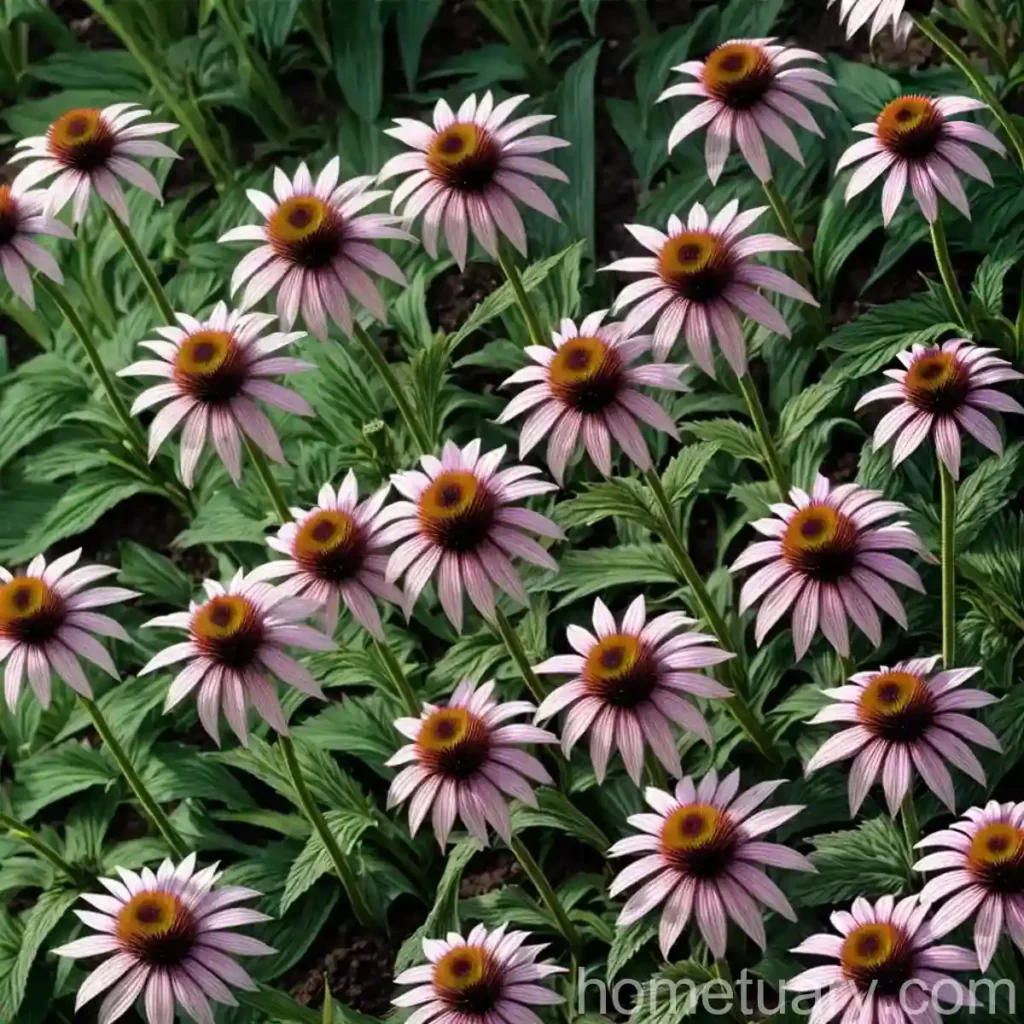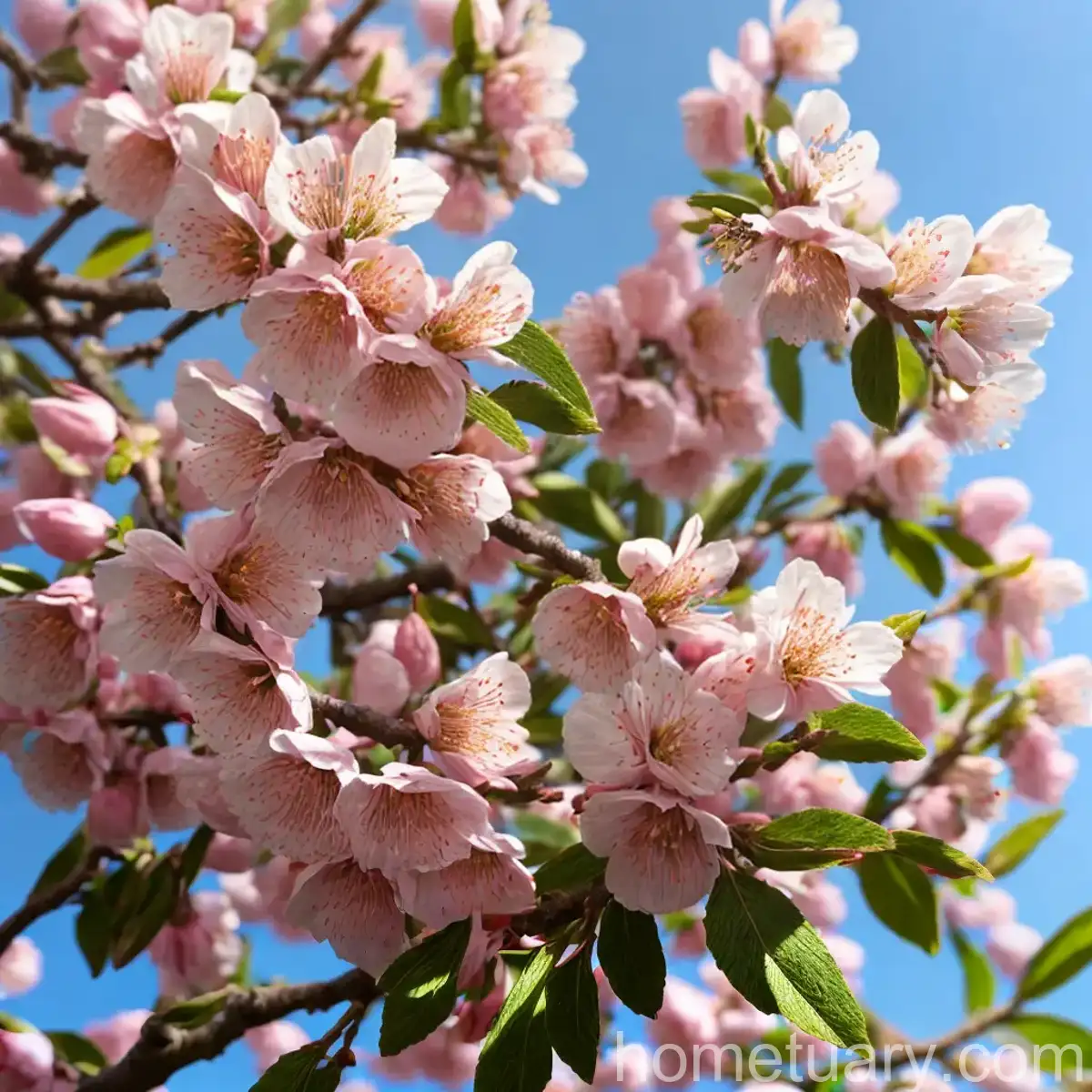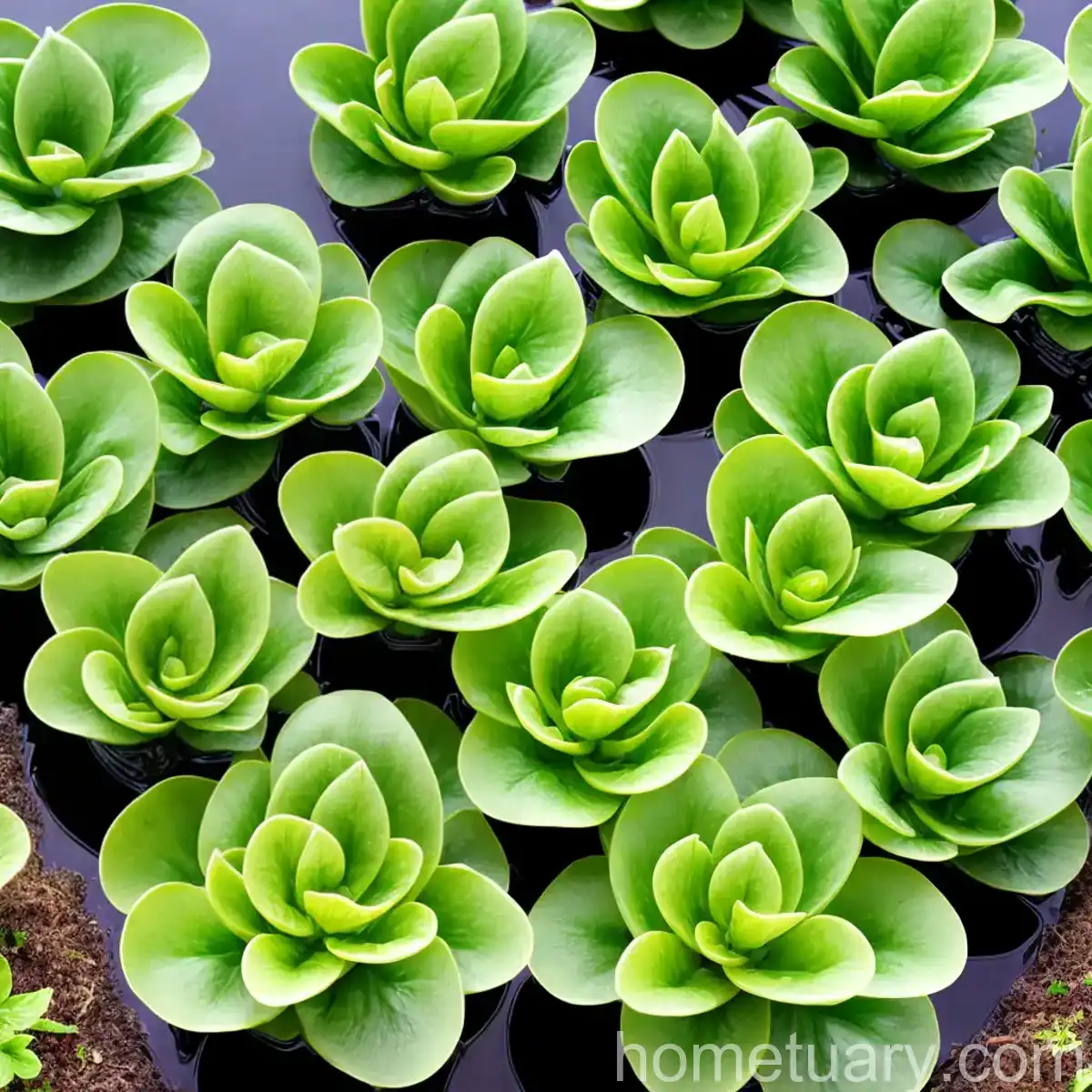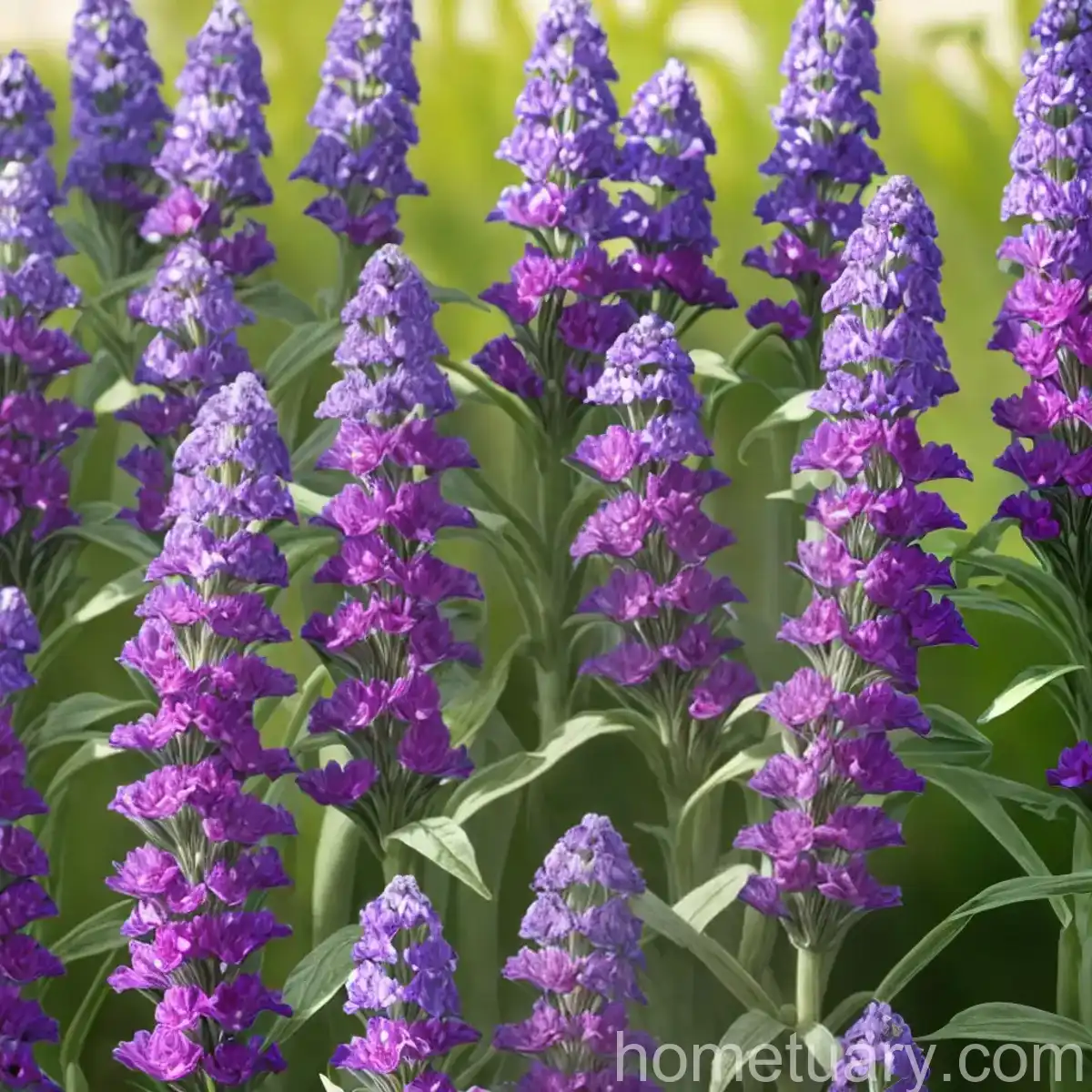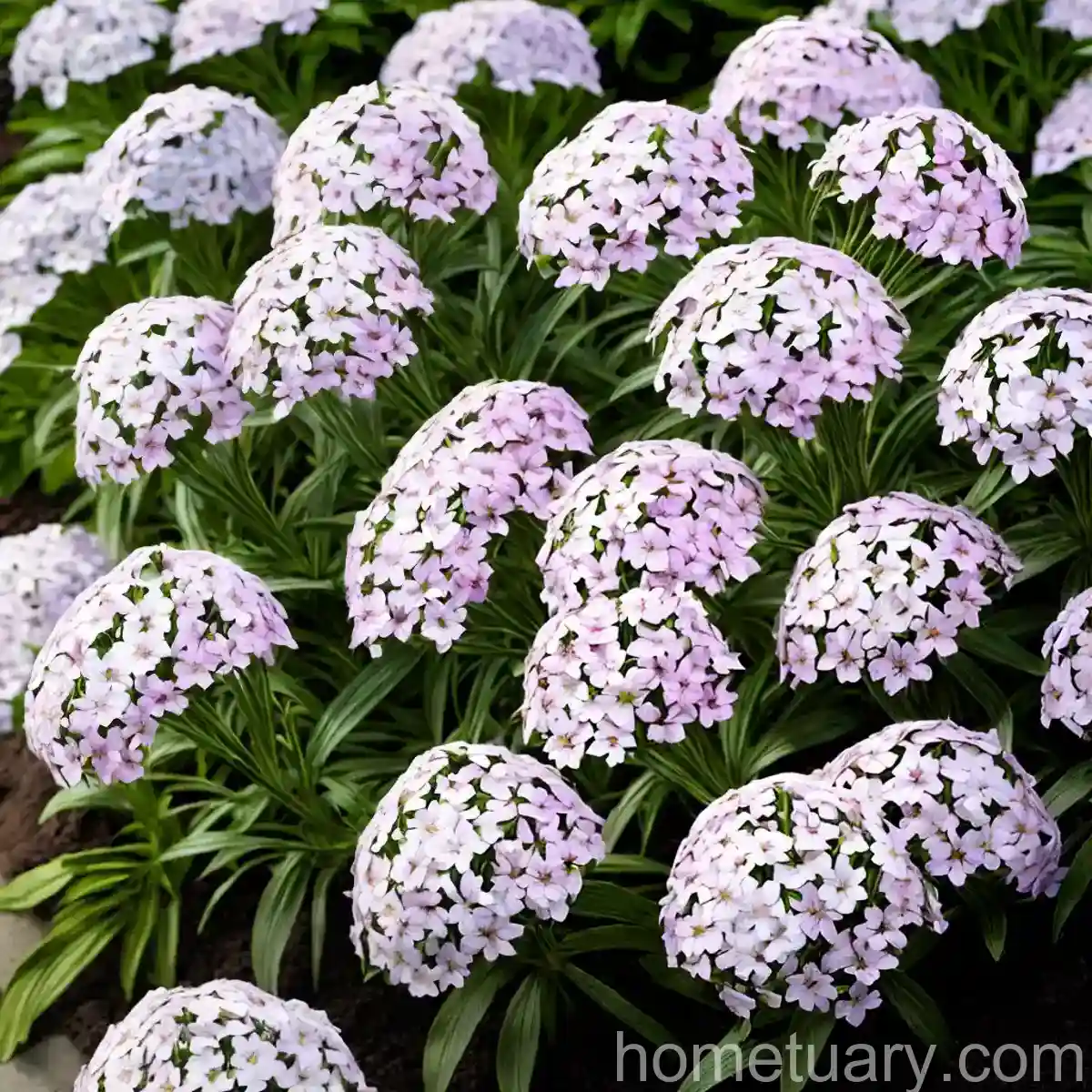Purple Coneflower (Echinacea purpurea ‘Kim’s Knee High’): A Comprehensive Guide

When thinking about adding vibrant and reliable perennials to your garden, one plant that should come to mind is the Purple Coneflower, scientifically known as Echinacea purpurea ‘Kim’s Knee High.’ This stunning and beneficial plant is a favorite among gardeners due to its beautiful appearance and various medicinal and ecological benefits.
In this comprehensive guide, we will delve into the cultivation, uses, benefits, and other important aspects of the Purple Coneflower, providing you with the knowledge needed to successfully grow and care for this enchanting plant.
What is the purple coneflower (Echinacea purpurea ‘Kim’s Knee High’)?
The purple coneflower, or Echinacea purpurea ‘Kim’s Knee High,’ is a herbaceous perennial plant that belongs to the Asteraceae family. This cultivar of Echinacea purpurea is a compact and clump-forming perennial, bearing beautiful, daisy-like flowers with prominent, spiky, orange-brown central cones that are surrounded by vibrant purple ray florets. The ‘Kim’s Knee High’ variety is known for its dwarf stature, reaching a mature height of approximately 18-24 inches (45-60 cm).
This particular cultivar is esteemed for its long-lasting, dazzling blooms and its adaptability to a variety of garden settings, making it a favored choice for borders, containers, and mass plantings. Echinacea purpurea ‘Kim’s Knee High’ not only adds aesthetic appeal to gardens but also attracts pollinators and provides medicinal benefits.
Key Takeaways – Purple Coneflower (Echinacea purpurea ‘Kim’s Knee High’)
- The purple coneflower (Echinacea purpurea ‘Kim’s Knee High’) is a dwarf cultivar of the Echinacea purpurea species, boasting stunning purple flowers with prominent central cones.
- This perennial plant is well-suited for borders, containers, and mass plantings, adding vibrant color and attracting pollinators to the garden.
- Echinacea purpurea ‘Kim’s Knee High’ is valued for its medicinal properties, making it a popular choice for herbal remedies and natural healthcare.
- With proper care and attention to its specific cultural requirements, the purple coneflower can thrive and bring beauty and beneficial features to your landscape.
Now, let’s explore the cultural requirements and best practices for growing and caring for the purple coneflower (Echinacea purpurea ‘Kim’s Knee High’).
Culture
Water
Purple coneflowers are considered drought-tolerant once they are established, but they benefit from regular watering, particularly during periods of prolonged drought. When the plant is young or during dry spells, consistent watering is essential to support healthy growth and prolific flowering.
Watering Tips:
– Apply water at the base of the plant to keep foliage dry and reduce the risk of foliar diseases.
– Water deeply and less frequently to encourage the development of a deep and robust root system.
– Avoid overwatering, especially in clay or poorly drained soils, as it can lead to root rot and other issues.
Sunlight
For optimal growth and flowering, Echinacea purpurea ‘Kim’s Knee High’ prefers full sun to partial shade. In climates with hot summers, providing some afternoon shade can be beneficial, especially to prevent stress on the plant during extreme heat.
Sunlight Requirements:
– Aim for at least 6-8 hours of direct sunlight daily for best flowering and overall plant health.
– In warmer regions, provide protection from intense midday sun to avoid sunscald and maintain vibrant flower color.
Soil
Purple coneflowers perform best in well-drained, moderately fertile soil. They are adaptable and can tolerate various soil types, including loamy, sandy, or rocky soils, as long as the soil drains well and does not become waterlogged.
Soil Recommendations:
– Incorporate organic matter, such as compost, into the soil when planting to improve soil structure and fertility.
– Maintain slightly acidic to neutral soil pH levels (pH 6.0-7.0) for optimal nutrient uptake and overall plant vigor.
Fertilizer
Generally, Echinacea purpurea ‘Kim’s Knee High’ does not require heavy feeding and can thrive in moderately fertile soil without frequent fertilization. However, applying a balanced, slow-release fertilizer in spring can support robust growth and prolific flowering.
Fertilizing Guidelines:
– Use a granular, all-purpose fertilizer with a balanced NPK ratio, following the manufacturer’s instructions for application rates.
– Avoid excessive use of high-nitrogen fertilizers, as it can promote lush foliage at the expense of flowering.
Pruning
Pruning the purple coneflower can help maintain its compact form, encourage bushier growth, and prolong the flowering period. Deadheading spent flowers is particularly important to prevent the plant from expending energy on seed production and to stimulate the continuous emergence of new blooms.
Pruning Practices:
– Regularly remove faded or wilted flowers by cutting back the flower stalks to just above a set of healthy leaves or buds.
– After the initial flowering period, consider cutting back the entire plant by about one-third to promote new growth and a second flush of blooms.
Uses
Medicinal Uses of Purple Coneflower
Echinacea purpurea, including the ‘Kim’s Knee High’ variety, has a long-standing reputation in herbal medicine for its immune-boosting and anti-inflammatory properties. The roots, leaves, and flowers of the purple coneflower are used to create extracts, tinctures, and teas to support overall wellness and alleviate symptoms of colds, flu, and other respiratory infections.
Medicinal Benefits:
– Stimulates the immune system and aids in the body’s natural defense against infections.
– Acts as a natural anti-inflammatory agent, potentially reducing the severity of symptoms associated with various conditions.
– Supports overall respiratory health and may help alleviate symptoms of coughs and upper respiratory tract infections.
Purple Coneflower in Traditional Medicine
Indigenous peoples of North America traditionally used Echinacea purpurea as a remedy for various ailments, including wounds, snakebites, and toothaches. The plant was valued for its potential to promote healing and alleviate discomfort, leading to its continued use in traditional herbal medicine practices.
Historical Significance:
– Echinacea purpurea has been a part of traditional healing practices for centuries, serving as a versatile and trusted medicinal resource.
– Its historical use reflects the longstanding understanding of the plant’s therapeutic value and its relevance in natural healthcare traditions.
Natural Remedies with Echinacea purpurea ‘Kim’s Knee High’
The dried or fresh flowers and roots of the purple coneflower can be used to create natural remedies that support overall well-being and address a range of health concerns. From teas and tinctures to topical formulations, Echinacea purpurea ‘Kim’s Knee High’ offers versatile options for incorporating its medicinal benefits into everyday wellness routines.
Herbal Applications:
– Herbal teas and infusions made from purple coneflower can be consumed to support immune function and combat seasonal wellness challenges.
– Topical preparations, such as salves and poultices, containing Echinacea purpurea may aid in the natural healing of minor skin irritations and wounds.
Propagation
Growing Purple Coneflower from Seed
Propagating Echinacea purpurea ‘Kim’s Knee High’ from seed is a rewarding and economical way to expand your garden’s floral display. With a few simple steps, it’s possible to grow healthy seedlings that will develop into robust, flowering plants over time.
Seed Propagation Tips:
– Sow seeds indoors in early spring or directly in the garden in fall for natural stratification and germination in the following spring.
– Provide consistent moisture and warmth during the germination period, typically 10-20 days.
– Transplant seedlings to the garden once they have developed several sets of true leaves and the risk of frost has passed.
How to Divide Echinacea purpurea ‘Kim’s Knee High’
Dividing established clumps of purple coneflower is an effective method for rejuvenating the plant, managing its size, and creating new plantings. Division can help maintain the plant’s vigor and promote the formation of additional blooms in the garden.
Division Guidelines:
– Perform division in early spring or early fall to minimize stress on the plant and allow for successful establishment.
– Dig up the plant and carefully separate the root mass into sections, ensuring that each division has healthy, intact roots and several growing points.
– Replant the divisions in prepared soil, water thoroughly, and provide adequate care to facilitate recovery and new growth.
Container Cultivation
Growing Echinacea purpurea ‘Kim’s Knee High’ in Containers
The compact growth habit of ‘Kim’s Knee High’ makes it well-suited for container cultivation, allowing for versatility in garden design and the creation of stunning focal points on patios, balconies, and other outdoor spaces.
Container Gardening Tips:
– Choose a sizable container with adequate drainage holes to accommodate the plant’s root system and prevent waterlogging.
– Use a well-draining potting mix that provides essential nutrients and encourages healthy root development.
– Position containers in locations that receive ample sunlight and maintain consistent moisture levels during the growing season.
Container Plant Popularity
Echinacea purpurea ‘Kim’s Knee High’ is a sought-after choice for container gardening due to its manageable size, vibrant blooms, and adaptability to confined growing spaces. The plant’s visual appeal and potential to attract pollinators make it a popular addition to container gardens, where it can thrive and contribute to the overall beauty of the setting.
Benefits of Container Cultivation:
– Adds color and texture to outdoor spaces, such as patios, decks, and balconies, creating inviting and visually appealing displays.
– Allows for easy mobility and placement adjustments, enabling gardeners to experiment with different arrangements and design concepts.
Common Diseases
Disease Diagnosis
While robust and relatively disease-resistant, purple coneflowers are susceptible to a few common fungal diseases that can affect their overall health and appearance. Recognizing and promptly addressing potential disease issues is crucial for maintaining the vitality of the plants in your garden.
Common Diseases:
– Powdery Mildew: Appears as a powdery white coating on the leaves, typically during periods of high humidity and poor air circulation.
– Leaf Spot: Presents as dark, often circular lesions on the foliage, potentially leading to defoliation and reduced plant vigor.
Disease Management Tips
Proactive management practices can help minimize the risk of disease development and support the overall well-being of purple coneflowers. By implementing appropriate cultural practices and taking preventive measures, you can create an environment that discourages disease incidence and promotes plant resilience.
Management Strategies:
– Provide ample air circulation around plants by spacing them appropriately and avoiding overcrowding in beds and borders.
– Water the plants at the base in the morning to allow the foliage to dry quickly, reducing the conditions conducive to fungal growth.
– Apply preventive fungicidal treatments, especially during periods of high humidity or if disease issues have been a recurrent problem.
Common Pests
Purple Coneflower Pest Control
While Echinacea purpurea ‘Kim’s Knee High’ is relatively resistant to most common pests, it can occasionally encounter issues with insect pests that may impact the plant’s growth and flowering. Being vigilant in monitoring for early signs of pest activity can help prevent infestations and minimize potential damage.
Potential Pests:
– Aphids: These small, sap-sucking insects can colonize tender growth tips and flower buds, leading to distorted growth and honeydew accumulation.
– Japanese Beetles: These voracious feeders can skeletonize foliage and cause aesthetic damage to the plant if left unchecked.
Natural Pest Control with Purple Coneflower
Harnessing the pest-repelling properties of the purple coneflower and strategically incorporating companion plants can contribute to a balanced and ecologically friendly approach to pest management in the garden.
Natural Control Methods:
– Interplant aromatic herbs and flowers, such as basil, lavender, and marigolds, near purple coneflowers to deter pest insects through their natural scents and properties.
– Attract beneficial insects, such as ladybugs and lacewings, by providing a diverse, pollinator-friendly habitat that supports natural predation of pest populations.
Botanist’s Tips
Tips for Successful Echinacea purpurea ‘Kim’s Knee High’ Cultivation
To maximize the beauty and benefits of the purple coneflower in your garden, implementing the following tips can help ensure successful cultivation and a flourishing plant display.
Cultivation Recommendations:
– Select well-drained planting locations with ample sunlight to support strong, healthy plant growth and abundant flowering.
– Incorporate organic matter into the soil and maintain balanced watering practices to promote optimal root development and overall plant vigor.
– Foster a diverse and pollinator-friendly garden environment to enhance the ecological value and natural beauty of purple coneflowers.
Fun Facts
Here are some intriguing and noteworthy facts about Echinacea purpurea ‘Kim’s Knee High’ that showcase the plant’s unique qualities and captivating features:
- Butterfly Magnet: The vibrant blooms of purple coneflowers attract an array of butterflies and other pollinators, contributing to the vitality and visual allure of the garden.
- Long-lasting Blooms: Echinacea purpurea ‘Kim’s Knee High’ produces an extended display of bright, colorful flowers, providing enduring interest and ornamental value.
- Cut Flower Appeal: The striking blooms of purple coneflowers make captivating additions to floral arrangements, adding a touch of natural elegance to indoor spaces.
External Resources
For further information and insights into the varied aspects of purple coneflowers and Echinacea purpurea ‘Kim’s Knee High’, explore the following external resources:
- Purple Coneflower Benefits – Missouri Botanical Garden
- Echinacea purpurea ‘Kim’s Knee High’ Care Guide – National Gardening Association
- Growing Purple Coneflower in Your Garden – Royal Horticultural Society
- Best Conditions for Echinacea purpurea ‘Kim’s Knee High’ – The Old Farmer’s Almanac
- Medicinal Uses of Purple Coneflower – University of Maryland Medical Center
- How to Propagate Echinacea purpurea ‘Kim’s Knee High’ – The Spruce
- Natural Remedies with Echinacea purpurea ‘Kim’s Knee High’ – Memorial Sloan Kettering Cancer Center
- Purple Coneflower Companion Plants – Michigan State University Extension
- Natural Pest Control with Purple Coneflower – University of California Statewide Integrated Pest Management Program
- Pruning Tips for Echinacea purpurea ‘Kim’s Knee High’ – University of Minnesota Extension
- Purple Coneflower Drought Tolerance – Penn State Extension
- Purple Coneflower for Attracting Butterflies – National Wildlife Federation
- Echinacea purpurea ‘Kim’s Knee High’ in Landscaping – North Carolina State University Extension
- Natural Pest Control with Purple Coneflower – University of California Statewide Integrated Pest Management Program
By integrating cultural practices, uses, and practical tips, this comprehensive guide aims to empower gardeners and enthusiasts to nurture and appreciate the diverse virtues of the purple coneflower, Echinacea purpurea ‘Kim’s Knee High.’ Whether you are seeking to elevate the visual appeal of your garden, harness the medicinal benefits of this botanical gem, or attract pollinators and beneficial insects, this enchanting perennial has much to offer. Through thoughtful cultivation and care, the purple coneflower can continue to captivate and contribute to the ecological and aesthetic richness of garden landscapes.

